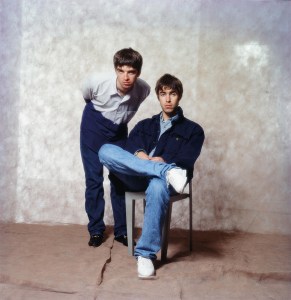If you crush the right testicle of a wolf and administer it in oil or rose water it will induce a loathing for sex. The Turks have a drink called coffee (for they use no wine). The Chinese have no nobility, or only those philosophers and doctors who have raised themselves by their worth. If you allowed a human being 25 square feet each, the Earth could bear 148,456,800,000,000 people. The Persian kings trained sparrows to hunt butterflies, inspired by hunting with hawks. Speaking of sparrows, the reason they are so short-lived is because of their salacity, which is very frequent. Once a nun ate a lettuce without saying grace or making the sign of the cross over it and was instantly possessed by devils; the same thing happened to an ordinary girl who ate an unhallowed pomegranate in Bononia. There are hobgoblins in Lipari who mend old irons. Interesting.
Robert Burton’s immense and extraordinary The Anatomy of Melancholy is one of the principal monuments of 17th-century prose. It is, on the face of it, an investigation into the causes and varieties of melancholy, and its cures. Burton means much more by melancholy than just depression or sadness; the scholarly disposition, love and desire, obsession, religious devotion and real insanity enter into his subject. There is, too, his speculation about other illnesses, and the divine or diabolical forces imposing melancholy on the unwary. When you add his exploration of the activities which might fend off melancholy, among them different food and drink, exercise and sociability, the work’s subject divides and proliferates, and might never come to an end.
It never did come to an end. Burton, born 1577, was the son of Leicestershire gentry, who went to Oxford at 16. Aged 22, he was made a life fellow of Christ Church and remained there. The first edition of The Anatomy was published in 1621, and was a considerable success. Four more followed in Burton’s lifetime, expanding the material a good deal, and in 1651, 11 years after his death, a sixth edition appeared, incorporating the last manuscript additions and corrections.
There is some suggestion from his epitaph in Christ Church that he may have committed suicide — ‘melancholy gave [him] life and death’. But though it seems likely that he had personal experience of profound melancholy, his book is an energetic and vitally curious investigation of the world, and hardly the inward-turning contemplation of a depressive.
Of course most of it is wrong. If you are the sort of reader who is only interested in factually accurate statements, it may not appeal. But to others, the ways an intelligent and indefatigably energetic reader understood the world and the human condition possesses endless fascination. Burton’s age was one intensely engaged in interrogating what the ancients thought they knew, and often systematically dismantling unexamined assertions in the light of empirical observations and scientific experiments. Sir Thomas Browne wrote an entire book, Pseudodoxia Epidemica, disproving long-held or popular beliefs; it seems surprising to us that he needed to devote a chapter to explaining that badgers do not in fact have legs much shorter on one side than the other to enable them to run on hillsides.
Burton is not quite like that, and The Anatomy reports all sorts of extraordinary beliefs without much skepticism. Some of his first readers must have been aware that many of his statements were false. The first professor of Arabic at Oxford (who was appointed in Burton’s lifetime) was Edward Pococke, who had lived in Aleppo and would have known that it wasn’t Muslims who believed that remission of sin could be obtained by bathing in the Ganges. In many ways The Anatomy is one of the last major works of medieval thought, and its fascination largely lies in the hugely elaborate and artificial structures with which it tries to account for real, observable phenomena.
What, for instance, is melancholy? It is a disease. How many diseases in general are there? It is ‘a question not yet determined’, though Pliny claims there are 300. Among these are the diseases of the head. Not counting those of ‘eyes & ears, nostrils, gums, teeth, mouth, palate, tongue, wesel, chops, face, &c’, there are those belonging ‘properly to the brain’ — baldness, for instance. The ‘skins next to the brain’ produce headaches; the ventricles produce vertigo and apoplexy; the nerves cramps, convulsion, tremor, palsy; the ‘excrements of the brain’ catarrhs and sneezing; and ‘the brain itself’ produces ‘frenzy, lethargy, melancholy, madness…’.
Confusingly, however, melancholy is also a black and sour humor, along with blood, phlegm and choler, corresponding to predominant factors in personalities. Still more confusingly, we can also divide all diseases into ‘four principal heads’ — leprosy, gout, dropsy and falling sickness — which, when cured, would incidentally relieve minor dependent ailments such as ulcers and toothache. As an exercise in arbitrary classifications, the constant divisions and subdivisions of The Anatomy take some beating. No wonder Jorge Luis Borges was a fan.
And, of course, sometimes Burton can surprise us by an inquiry of real modernity. He sets out with great clarity the current ‘Goldilocks principle’ in astrobiology — that things are just right on our planet for the development of life. He observes that there must have been a ‘vicissitude of sea and land’ for relics of fish (I think he means fossils) to be discovered on what are now high mountains. And he often seems unexpectedly free of the rigid social opinions of his time. He denounces the belief that the nobility could hunt on land but only the laborer could fish, reporting on a Silesian nobleman ‘booted up to the groins’ in a river. He also has a pleasingly advanced interest in personal merit rather than inherited position, where ‘worth and sufficiency’ quite often consist of being able to ‘hawk and hunt, ride a horse, play at cards and dice, swagger, drink, swear and take tobacco with a grace’.
Most of all he knows that people overestimate the value and merit of their own position, recommending what his book demonstrates: an interest in remote and apparently bizarre behavior. We should not ‘prefer, as base Icelanders and Norwegians do, their own ragged island before Italy or Greece, the gardens of the world’.
There is an extravagantly comic burst of misogyny in the chapter ‘Symptoms of Love’, where Burton lists some of the things a man who is truly in love may overlook in a woman:
‘Though she be…wrinkled, pimpled, pale, red, yellow, tanned, tallow-faced, have a swollen juggler’s platter face or a thin, lean, chitty face… gubber-tushed, rotten teeth, black, uneven, brown teeth, beetle-browed, a witch’s beard, her breath stink all over the room… her dugs like two double jugs, or else no dugs… she stoops, is lame, splay-footed, as slender in the middle as a cow in the waist, gouty legs, her ankles hang over her shoes, a vast virago, or an ugly tit, a slug, a fat fustilugs, a truss, a long lean raw-bone, a skeleton, a sneaker and to thy judgement looks like a mard in a lantern… if he love her once, he admires her for all this.’
The Anatomy is a sometimes incomprehensible, disgusting mountain of material — and the best single-volume account of a lost intellectual culture. Establishing a text is an enormous challenge, and elucidating its worst difficulties a life’s work. This is a clean, readable version, with some helpful explanatory notes by Angus Gowland. Scholars might have preferred more emphasis on Burton’s sources rather than rudimentary explanations of ‘stalking horse’, for example, or ‘stare’ for ‘starling,’ a usage that was still current in W.B. Yeats. And an analytical index, though an enormous task, would have transformed our understanding of the book.
Was Burton mad? Did he know that what he had done was a survey of madness? Start with the sublime chapter ‘A Digression on the nature of Spirits, bad Angels, or Devils’ and wonder whether this sort of madness has some magic in it. As Burton promises:
‘I will set before your eyes in brief a stipend, vast infinite ocean of incredible madness and folly: a sea full of shelves and rocks, sands, gulfs, Euripes and contrary tides, full of fearful monsters, uncouth shapes, roaring waves, tempests, and Siren calms, Halcyonian seas, unspeakable misery, such comedies and tragedies, such absurd and ridiculous, feral and lamentable fits, that I know not whether they are more to be pitied or derided, or may be believed.’
This article was originally published in The Spectator’s UK magazine. Subscribe to the World edition here.

























